As years passed since Fantasia’s initial release in 1940, it became increasingly revered. Finally, in the late 90s, the Disney company was confident enough (or alternatively hubristic enough) to do an official follow up. Well, they were confident enough to make an official follow up but not necessarily to make one that was just as challenging as the original. On the spectrum of art to entertainment, which can be admittedly arbitrary, Fantasia is closer to the first one and Fantasia 2000 is closer to the second. Despite some attempts to have the new segments correspond to the original ones, it’s almost impossible to imagine someone liking the two movies equally. (By the way, my readers have probably forgotten a lot of the details about Fantasia by now, so they’d better go back and skim my post on it because I’ll be making comparisons.) A fan of the first Fantasia will probably say that it represents a time when the studio was more daring and ambitious and the more recent one shows how limited they’ve become. A fan of the second Fantasia will probably say it represents how much the studio had learned since the original, which was only their third full length feature. I won’t give away my opinion of which movie is the superior right away, but I will say in 2000’s defense that (a) it may be more audience friendly than the original but if you watch it in the context of 90s Disney animated movies, which had a very specific narrative formula, it’s still startling different, (b) while Fantasia is able to appeal to people in a way 2000 can’t, the reverse is also true, and (c) it’s at least a worthier follow up than either Make Mine Music or Melody Time.
Fantasia 2000 (which was actually released in 1999.)
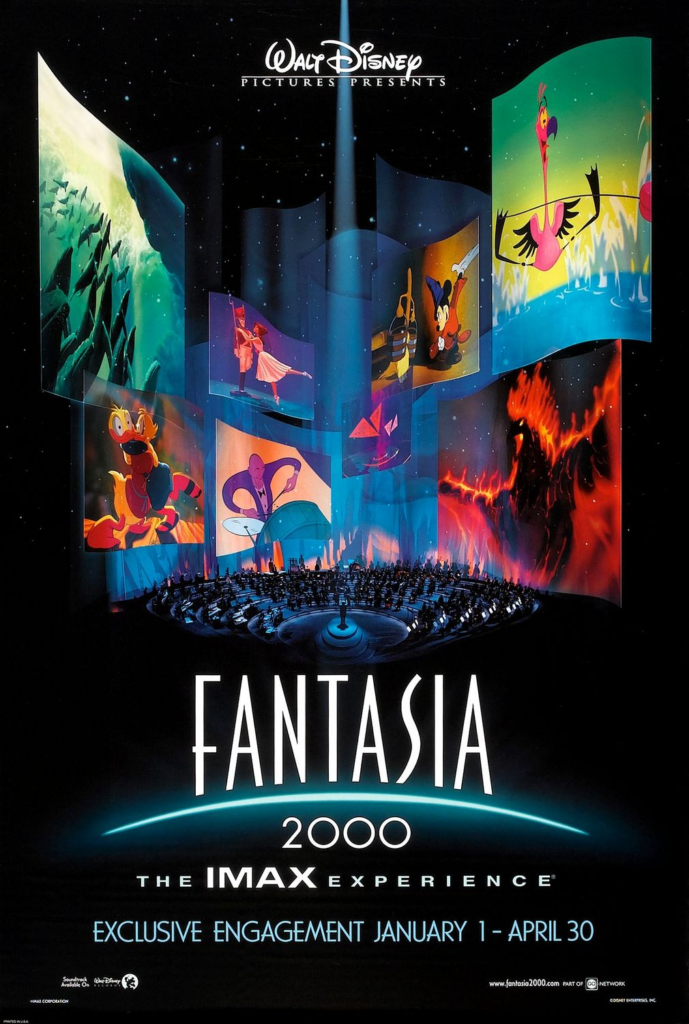
We begin with giant screens or possibly giant pieces of paper, showing scenes from the original Fantasia (including the meet the soundtrack interlude!) floating through space. These rectangles form a concert hall which contains not only the orchestra for this movie and its conductor, James Levine, but also its animators seated at their desks. This is a really cool idea which makes it seem as though both the musicians and the animators are being conducted at the same time. The whole magical orchestra in space thing is also much cooler than the framing device for the original movie. But in a way, I feel that the very prosaicness of the first Fantasia’s concert hall made a better contrast to the magic of the animated segments. I’m happy I don’t have to choose between the two framing devices.
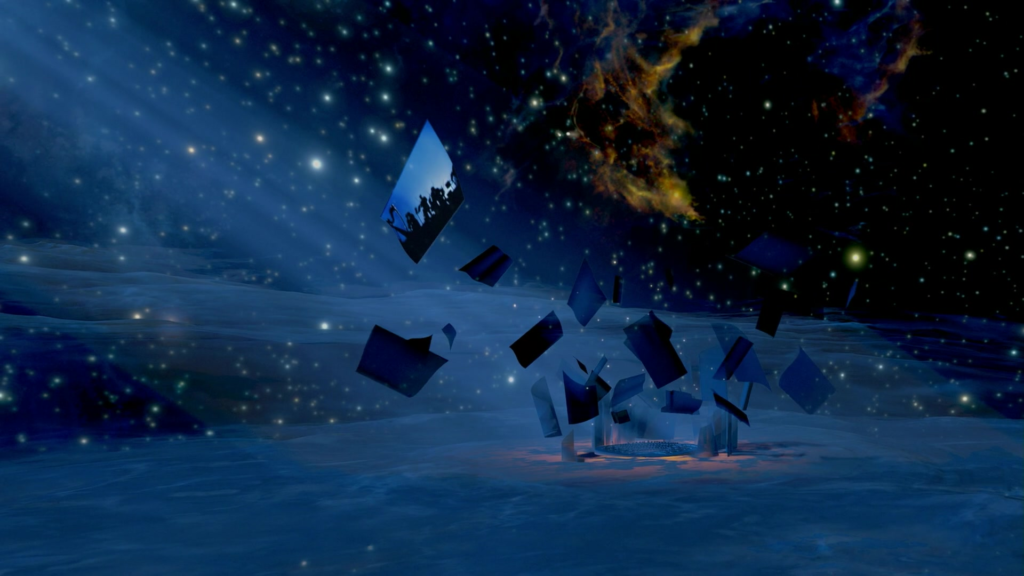

One of the aforementioned giant images from Fantasia is of Deems Taylor’s first introduction. We hear a portion of it which also serves as the intro this Fantasia’s opening segment.
Beethoven’s Symphony No. 5
This short resembles the original movie’s first segment, Toccata and Fugue in D Minor, in that they’re both made up of colorful abstract images.
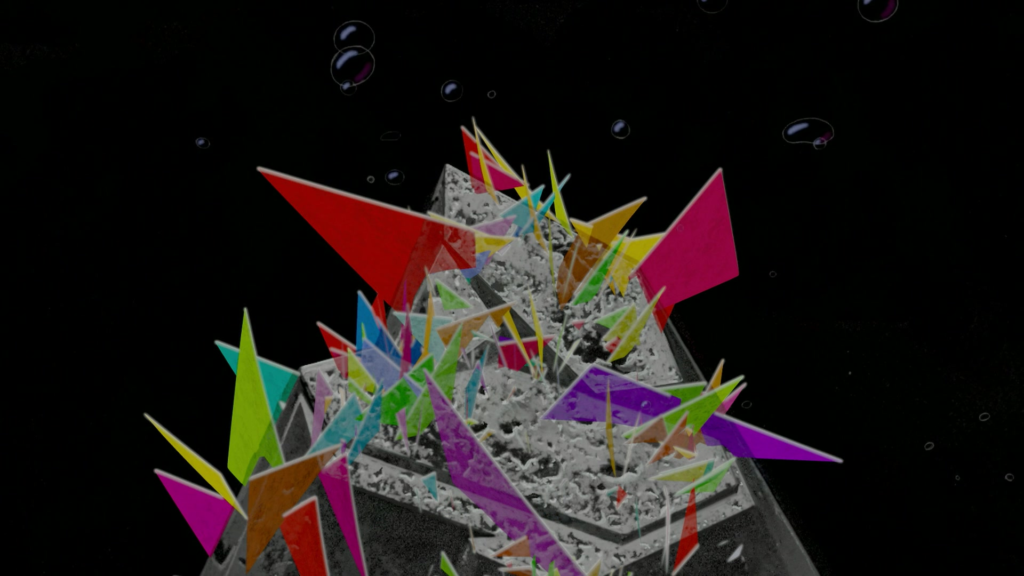
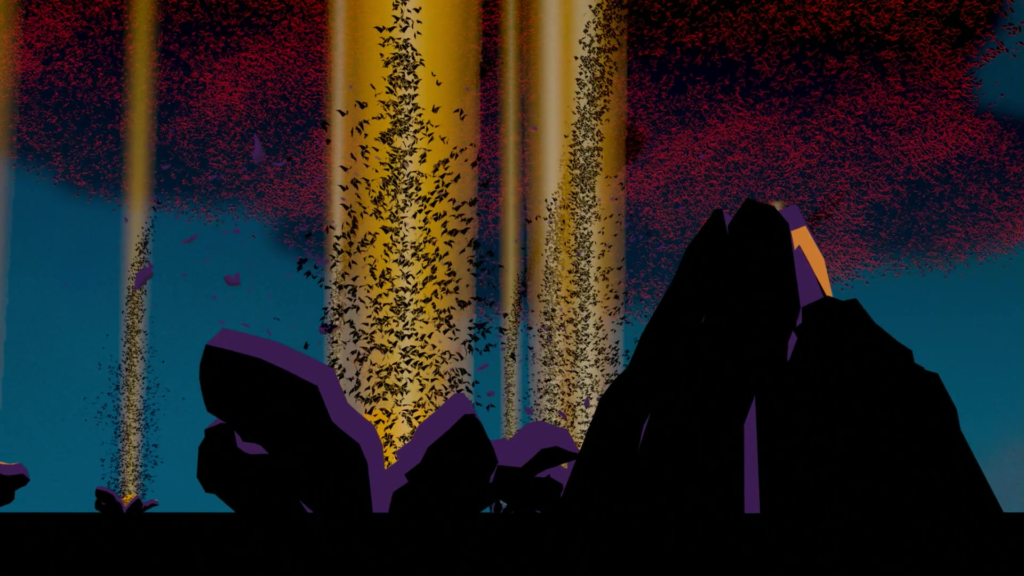
Where they differ is that Beethoven’s Ninth has a plot albeit a surreal, hard to describe one. (It’s basically about a group of flying creatures made up of brightly colored rectangles battling a group of similar flying creatures made of dark rectangles.) This is one of the major differences between the two Fantasias. The first one only set music to stories when the original music was supposed to tell a story. For “pure music”, they used pure imagery. With Fantasia 2000 every segment has a definite story with a conflict and a resolution.[1]Though admittedly this is less true of Pines of Rome than of the others.
This is in keeping with how the movie is less interested than its predecessor in honoring the composers’ original intentions. For example, Stravinsky intended his Rite of Spring to express primitive life, so Disney set it to images of dinosaurs. Beethoven’s Pastoral Symphony was supposed to be about a day in the countryside, so Disney showed a day in the arcadian countryside. OK, so it wasn’t exactly what the composers had in mind, but for all Fantasia’s creativity, it always had more of a connection to the original intent behind the music than 2000 has. (Elgar intended Pomp and Circumstance to be played at many solemn occasions so in Fantasia 2000 it accompanies the story of…Noah’s ark. That was a solemn occasion, I guess.) Because of this Fantasia is probably more likely to please classical music fans than 2000.[2]Although I’m given to understand neither is popular with purists because of the edits they make to the compositions and to the visuals’ potential influence over what viewers imagine when they … Continue reading
Having written that, I don’t think there’s any reason why being truer to the composers’ intentions makes the shorts better per se. And I honestly enjoy this one better than Fantasia’s Toccata and Fugue. While it can’t compete with the most striking imagery from that one and has less variety, its more consistently enjoyable to watch. And having a plot gives it a clear theme of good vs evil, making it more emotionally compelling. Besides which, I honestly like Beethoven’s Ninth better than Bach’s Toccata and Fugue in D Minor, though both are powerful pieces of music.
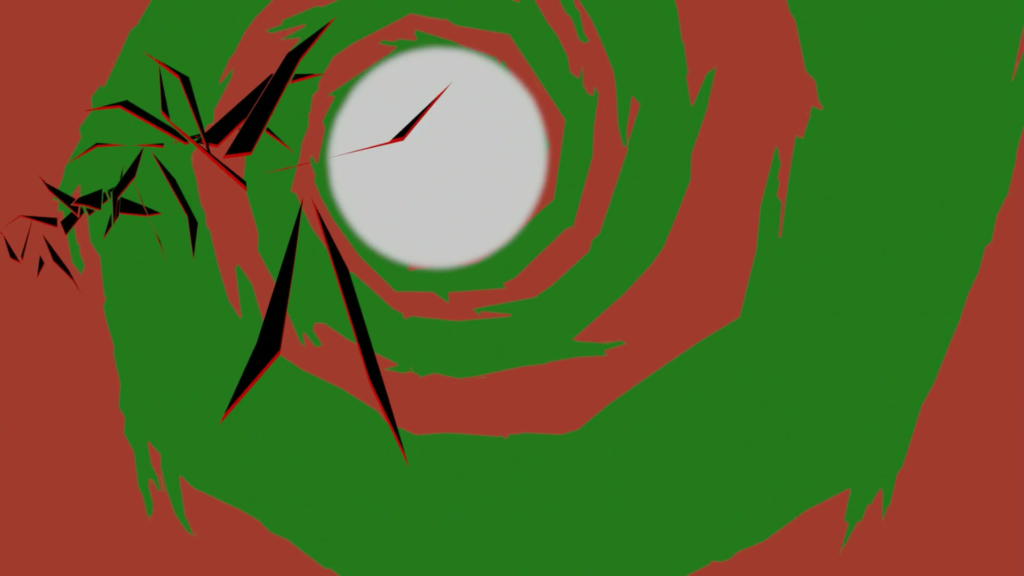
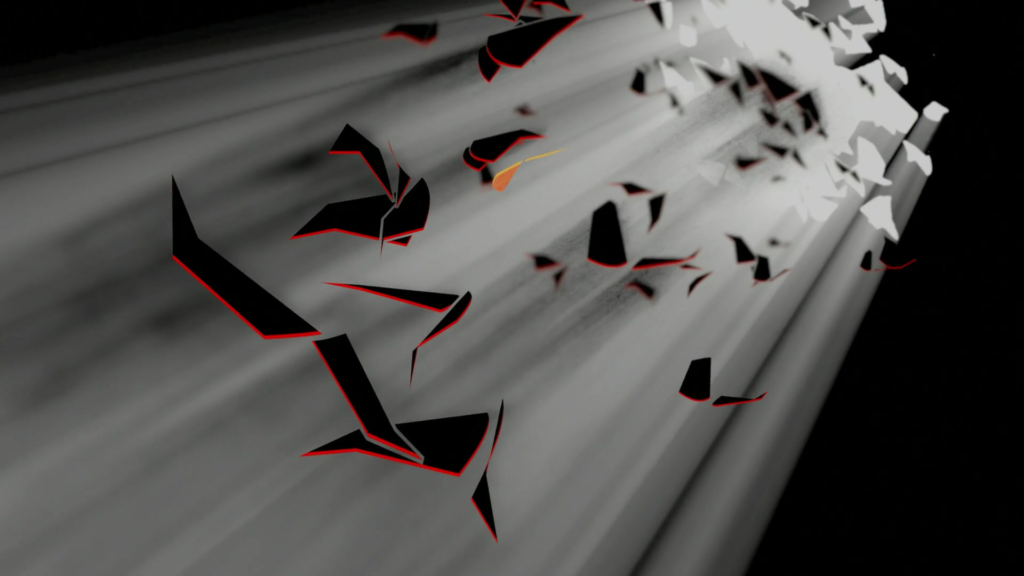
After that, we meet our new host, Steve Martin.
Wait. What?



Ah, yes. Unlike the original Fantasia, this one has a different host for each segment and they’re all, or practically all, celebrities, famous musicians, singers and actors. The idea, according to producer Don Hahn who directed these intros, was that they wanted representatives of every art, not just music. But you don’t have to look far on the internet to find people criticizing this avalanche of celebrities as annoyingly pandering.[3]If the idea was to make the movie more marketable, the marketing department itself doesn’t seem to have picked up on it. I don’t remember any of the celebrity hosts being mentioned in … Continue reading I can’t say those objections are wrong though I will say in this movie’s defense that all of these celebrities have a better screen presence than Deems Taylor did. The larger problem for me with the introductions from both movies is that they seldom feel necessary. I find myself skipping them half the time whenever I watch either Fantasia.
Respighi’s Pines of Rome
This segment features whales, who fly up into the sky when touched by the aurora borealis. Seriously.
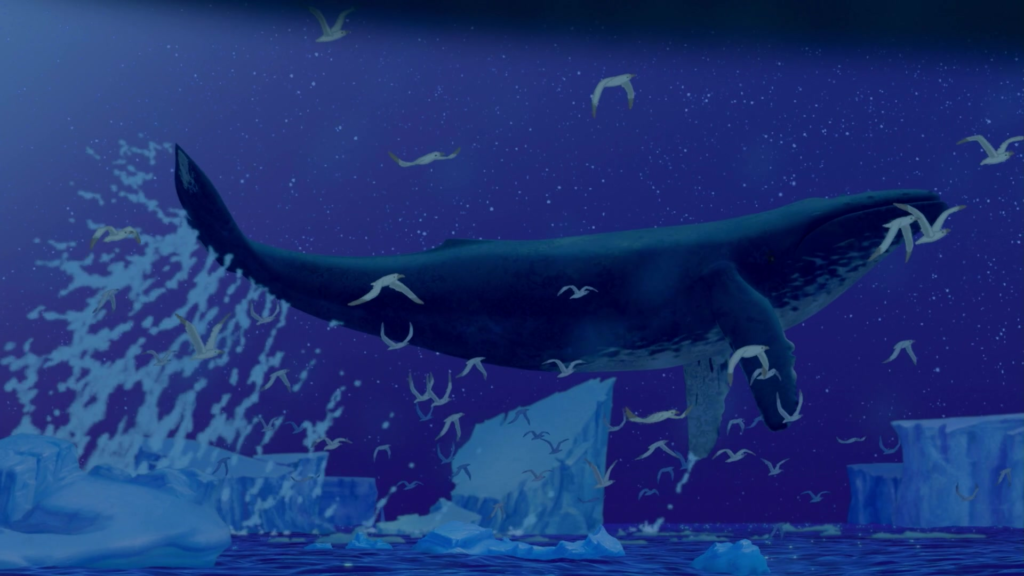
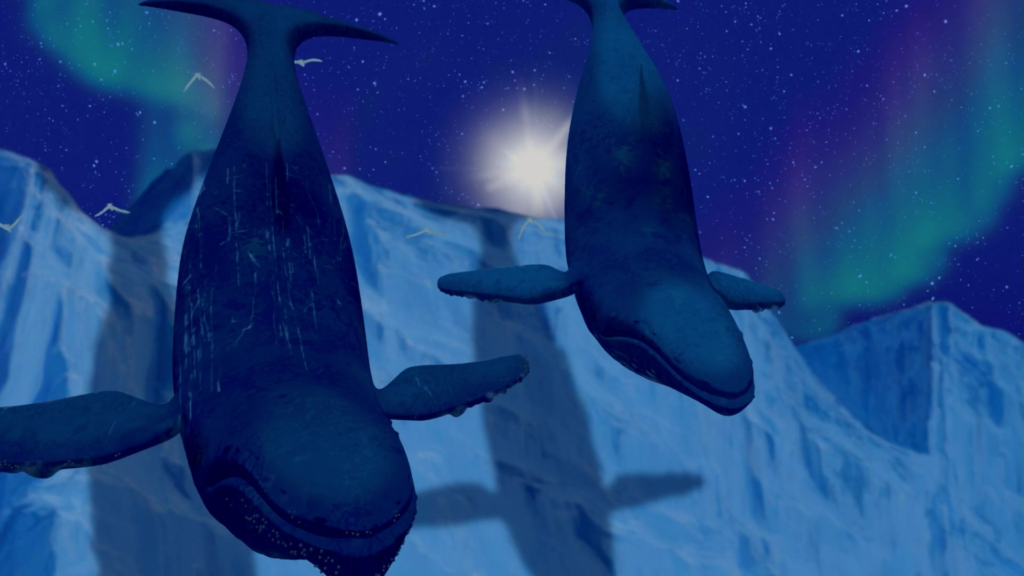
Crazy as it sounds, this short is absolutely beautiful with a particularly awe-inspiring finale. Its epic scale and grandeur recall the first Fantasia’s Rite of Spring and its whimsy brings to mind The Nutcracker Suite or the Pastoral Symphony. It has a bit of a conflict in the middle, but less of one than any other segment in Fantasia 2000. Because of this it shares the aimless appeal of the plotless parts of the first Fantasia but doesn’t risk becoming as boring for some viewers as they did. If I had to pick one segment of either movie to save from a burning building, this would be it.
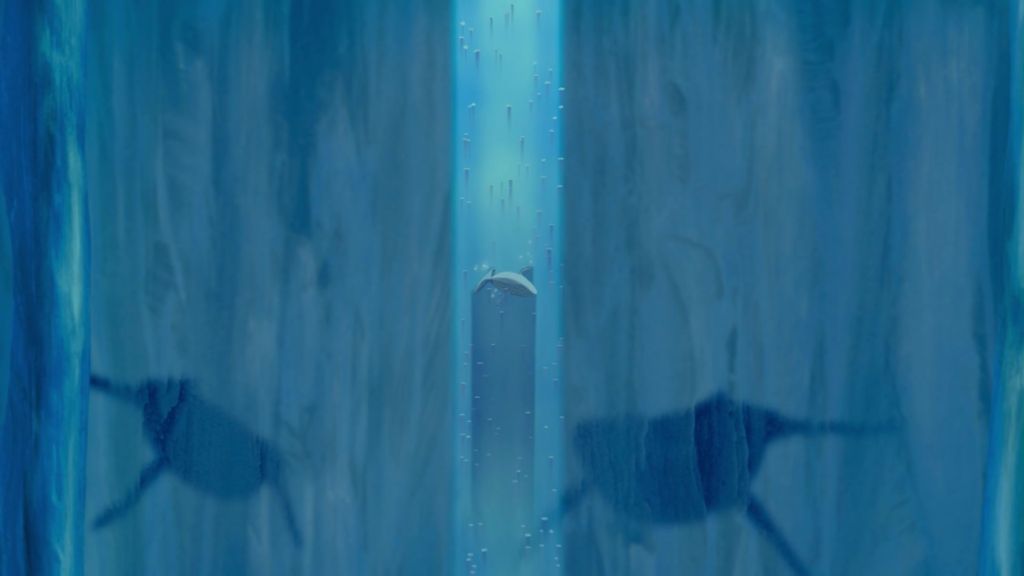

Gershwin’s Rhapsody in Blue
This segment is based on the artwork of caricaturist Al Hirschfield. It follows a day in the life of several residents of New York City, some rich and some poor, during the Great Depression. I’ll admit I was skeptical of this material at first. The first Fantasia featured fairies, magicians, dinosaurs, unicorns, gods, ghosts and demons. Aren’t caricatures of New Yorkers unworthy of such company? But while it’s not my favorite, this segment won me over. Hirschfield’s artwork lends itself wonderfully to animation. The characters are a joy to watch and the short is full of great gags.
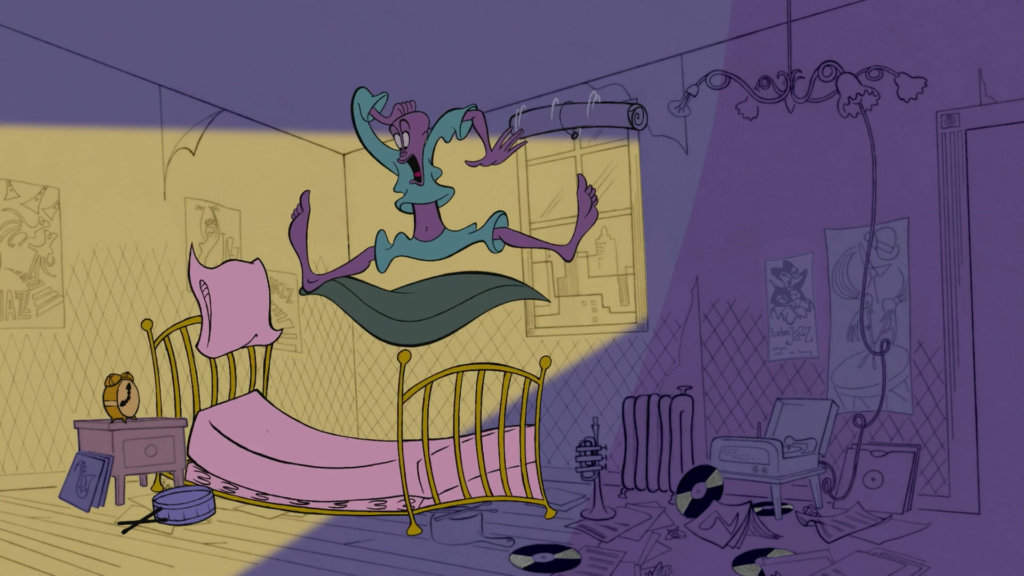
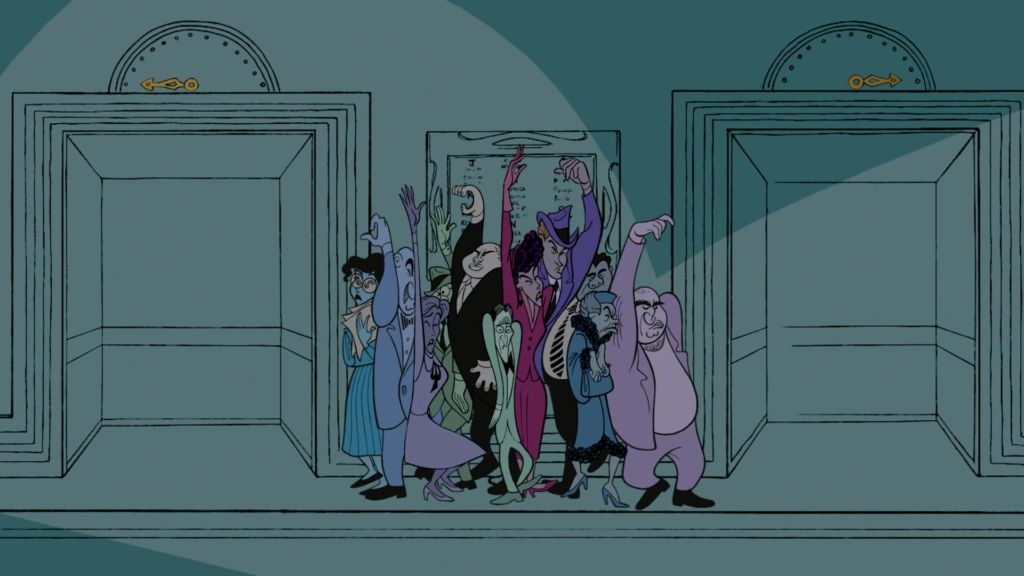
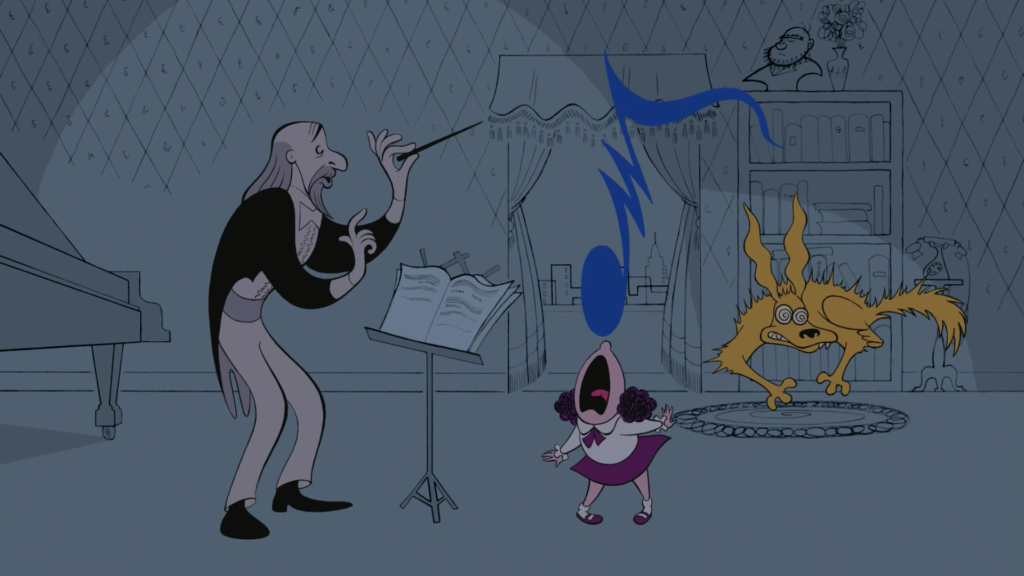
This has the distinction of being the only Fantasia segment to feature a cameo of the original composer.
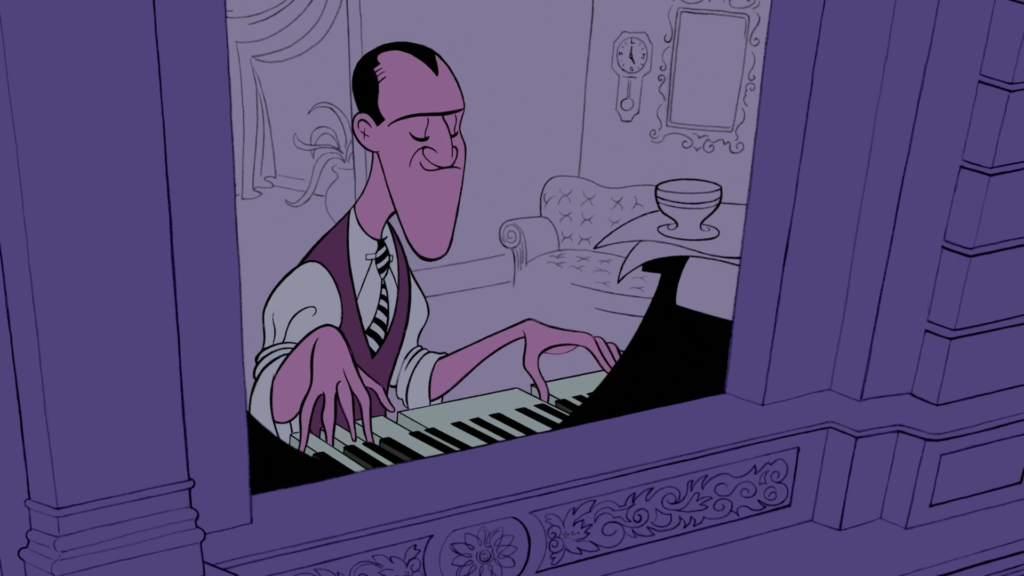
It also has a lovely moment towards the climax in which the leads all stare down at an ice-skating rink and fantasize about their secret wishes. Hey, who says being cartoony means it can’t be emotionally powerful?
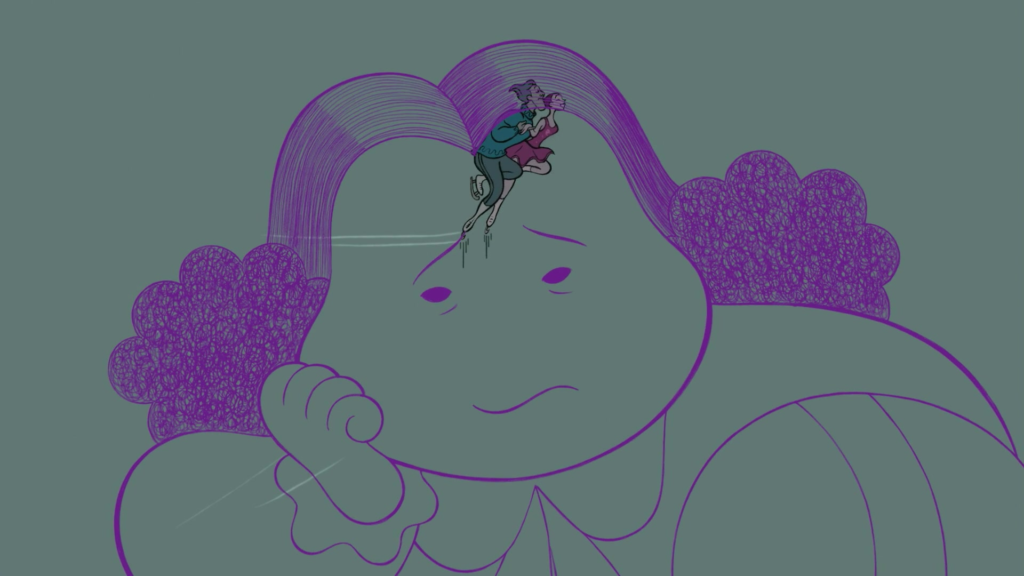
Shostakovich’s Piano Concerto No. 2 in F Major
This segment is an adaptation of The Steadfast Tin Soldier by Hans Christian Andersen, the story of a love triangle between a one-legged toy soldier, a beautiful ballerina figurine and an evil jack-in-the-box.[4]Who, in this version, looks kind of like the villain from Shrek.
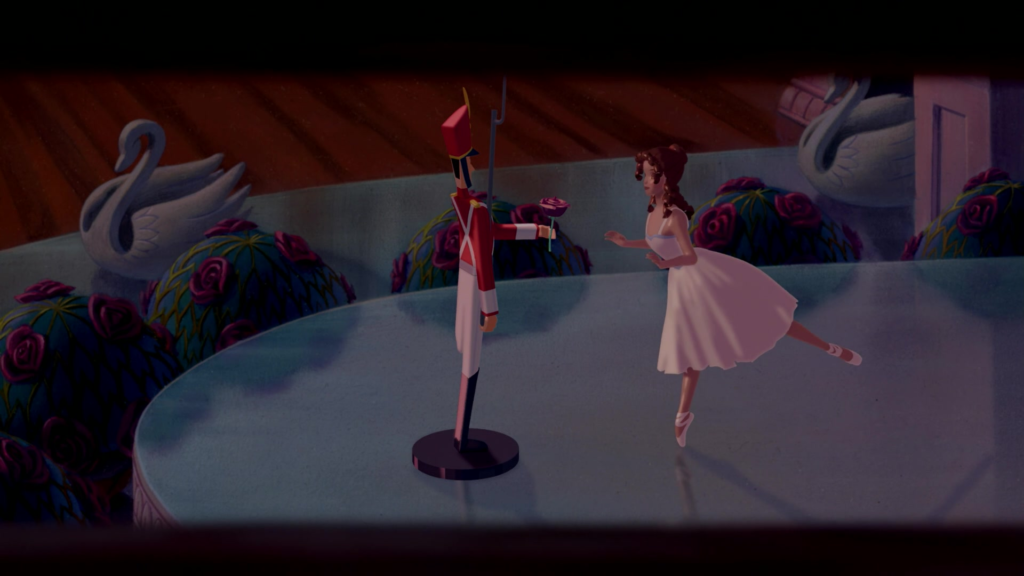
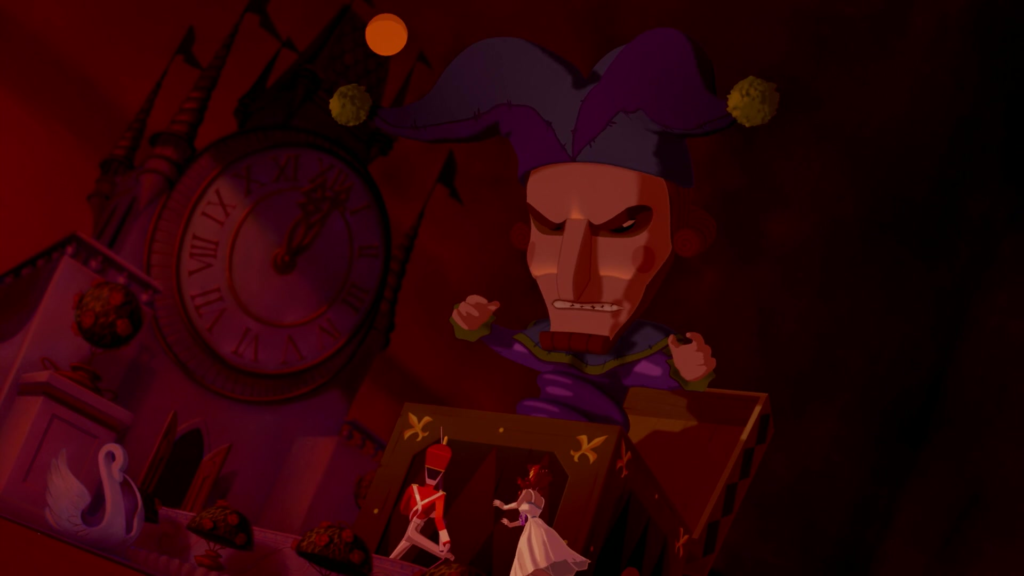
This one reminds me of The Sorcerer’s Apprentice in that there’s nothing particularly unique about it visually or in the choice of material. It’s just a really strong example of wordless storytelling.
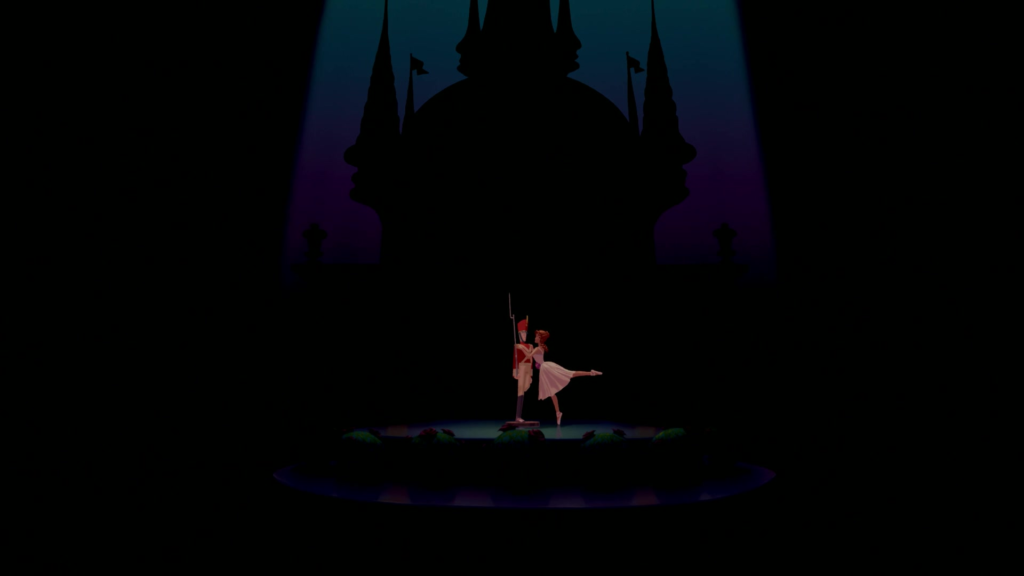
The adaptation gives the story a much happier ending than the original literary one had. Not being a particular fan of the source material[5]Though there are other stories by Hans Christian Andersen of which I am a fan., I don’t mind much but it brings up another noteworthy difference between this movie and the original Fantasia. In that film and in Disney’s other anim-anthology movies from the 1940s, some segments ended happily, and some didn’t. In Fantasia 2000, every ending is a happy one. There’s not necessarily anything wrong with that, but it does make the movie stand out less among Disney’s animated oeuvre. [6]Incidentally, a short adaptation of The Little Match Girl, another Hans Christian Andersen story, was made by Disney, apparently as part of an abandoned follow up to Fantasia 2000. Unlike Piano … Continue reading
Dukas’s The Sorcerer’s Apprentice
Wasn’t the Sorcerer’s Apprentice from the first Fantasia? It was but…. Wait, I forgot. That isn’t the next segment.
Saint-Saens’s Carnival of Animals Finale
This short is about a group of flamingoes who wish to perform a serious water ballet but one of them keeps messing it up with his desire to play with a yoyo. Honestly, that description is probably funnier than the actual segment. If I were to pick the most disposable of all the segments of Fantasia and Fantasia 2000, this would be it. Which actually says great things about both films because it’s a perfectly fine cartoon. The premise is pleasingly absurd, and the character design of the nonconformist flamingo is appealingly goofy.
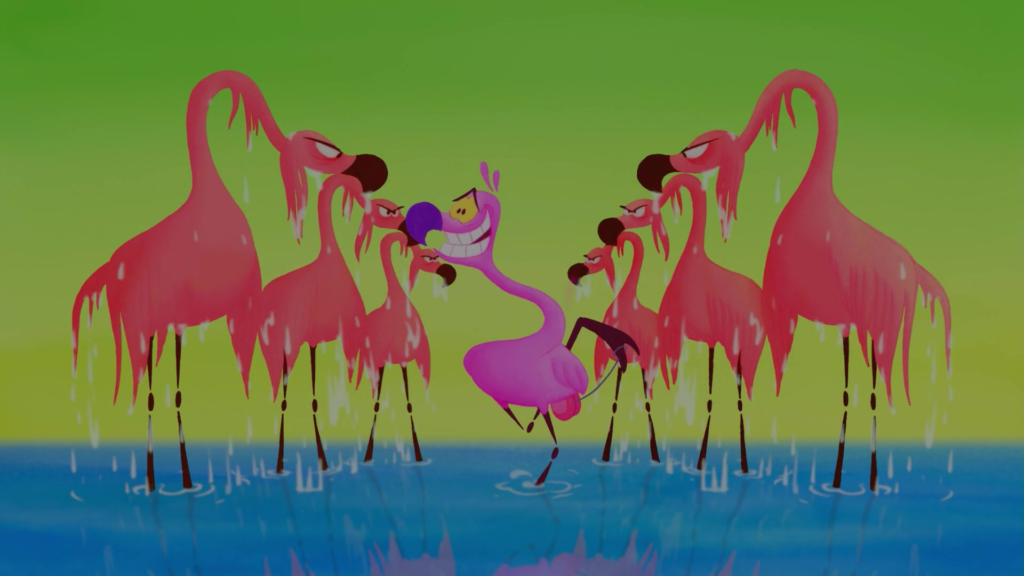

And I love the way that, similar to its obvious counterpart from the original Fantasia, Dance of the Hours, it starts out as a serious ballet before the comedic bits take over. But the visual gags aren’t nearly as memorable as those of that short. Maybe if it were longer and had more time to develop its conflict, it would make more of an impression. Then again, maybe that would wear its premise completely thin.
Dukas’s The Sorcerer’s Apprentice
Wasn’t this segment from the first Fantasia? Well, apparently Walt Disney’s original idea for Fantasia was that it would be a continuous project and the studio would make a different version every couple of years or so, keeping some of the old shorts, presumably the ones people felt worked the best, as well as showcasing new ones. Fantasia 2000 was supposed to pay tribute to that idea. But since The Sorcerer’s Apprentice is the only classic short included, it sticks out rather awkwardly. Maybe Disney felt there was no way they could market something called Fantasia without this segment.
To be fair, while it feels like an odd inclusion now when the two Fantasias are available in a two-disc DVD/Blu-ray collection or on Disney+, back when 2000 was originally released, not everyone could be expected to have seen the original movie recently. They probably appreciated getting to see this iconic part of it. And everything I wrote in praise of it when writing about Fantasia still applies here.

Elgar’s Pomp and Circumstance
This segment, a short featuring Donald Duck as Noah’s assistant on the ark, obviously seems like the new Sorcerer’s Apprentice, telling a classic story with a famous Disney cartoon star in the lead. But its comedic tone and its penultimate placement make it more like Dance of the Hours. And it’s a more than worthy successor. As with that one, I can’t explain why it’s so entertaining without spoiling it but suffice to say, it’s full of hilarious moments.
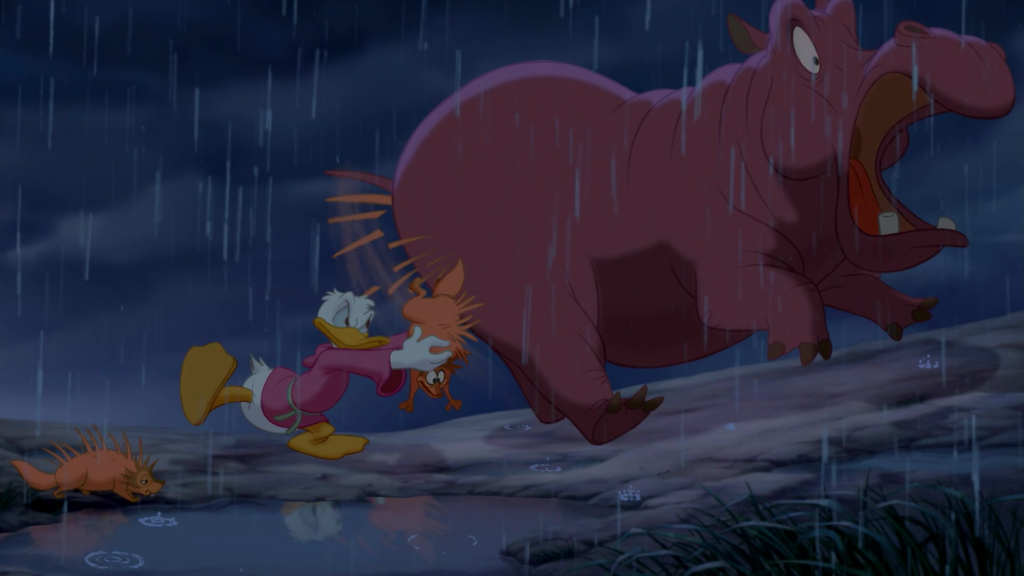

It also manages to be touching thanks to the plotline of Donald and Daisy each believing the other has perished in the flood and continually just missing each other, which isn’t nearly as annoying to watch as that description makes it sound.


Stravinsky’s The Firebird Suite
This segment tells the story of a benevolent nature spirit, her friendship with a stag, and her conflict with a destructive volcanic spirit whom she inadvertently awakens.[7]I’ve read this described as a rip-off of Princess Mononoke. While I’m familiar with (English dubs of) some of Studio Ghibli’s movies, I haven’t seen that one, so I can’t … Continue reading
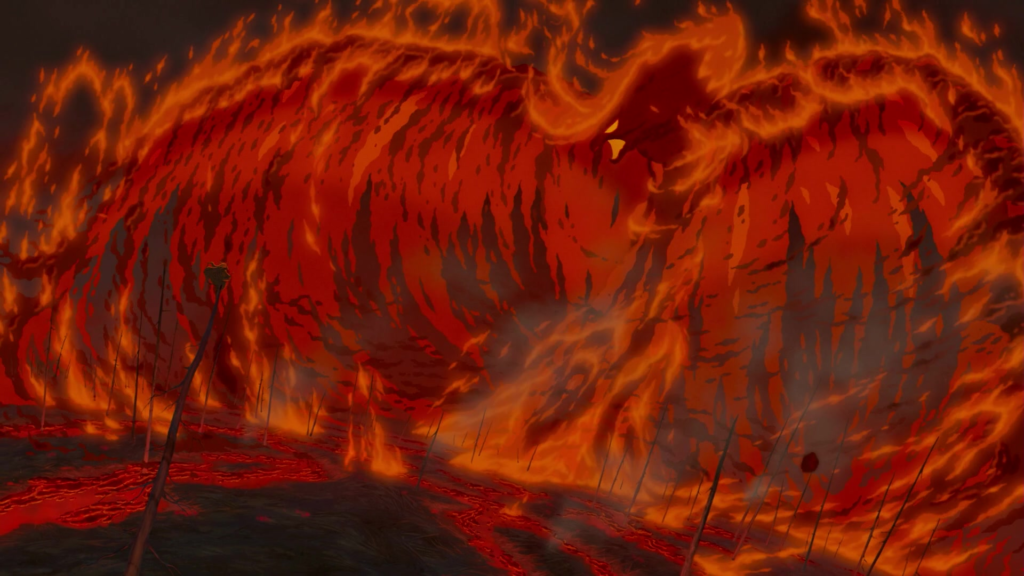
It’s a dazzling piece. If I were the type of person whom movies made cry, the lowest point of the story would have me in tears, thanks to the dryad’s great facial expressions.
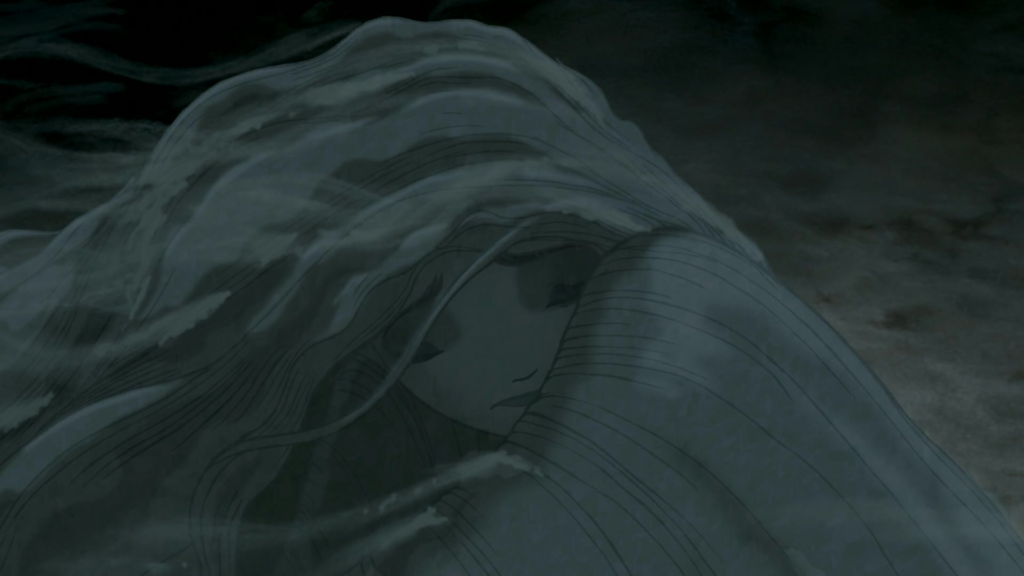
While the stag is animated in a realistic way and doesn’t have much in the way of facial expressions, he manages to be a tear-jerking presence too, in context.
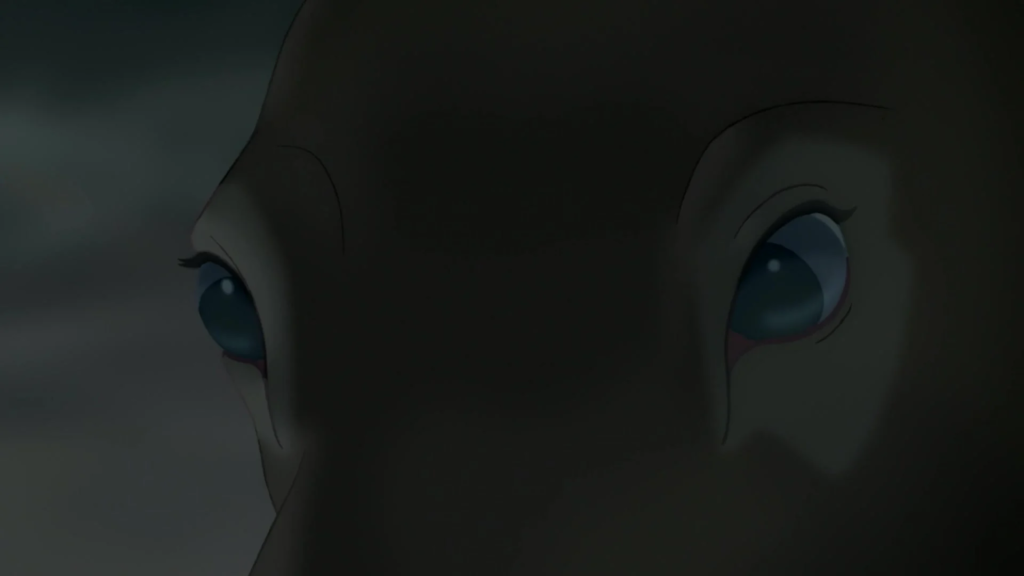
The short ends on a beautiful, uplifting, inspiring note[8]Sorry for the broad spoilers but Angela Lansbury’s introduction already kind of gives them away. on which, if I’m being honest, I feel the original Fantasia should have ended.
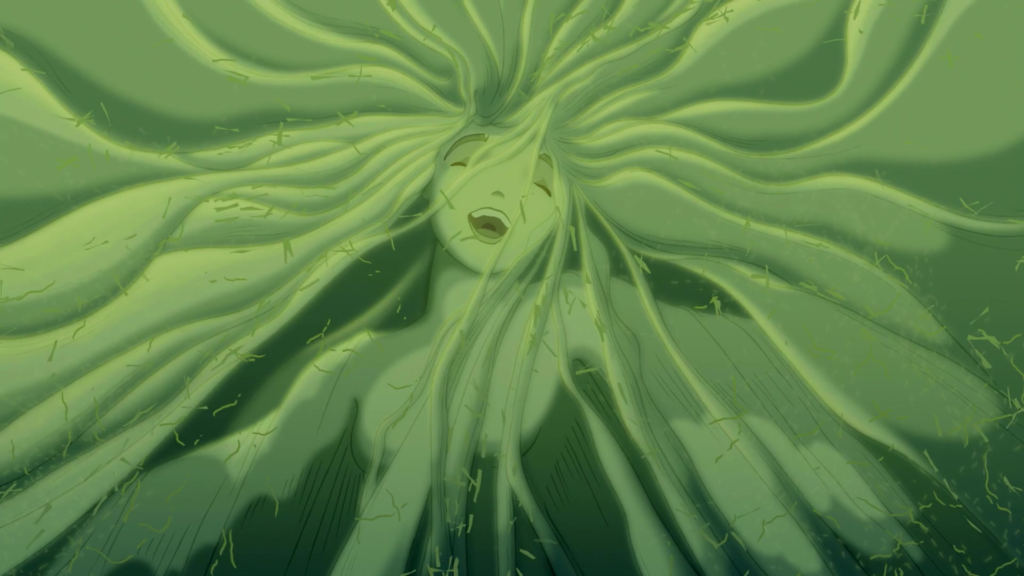
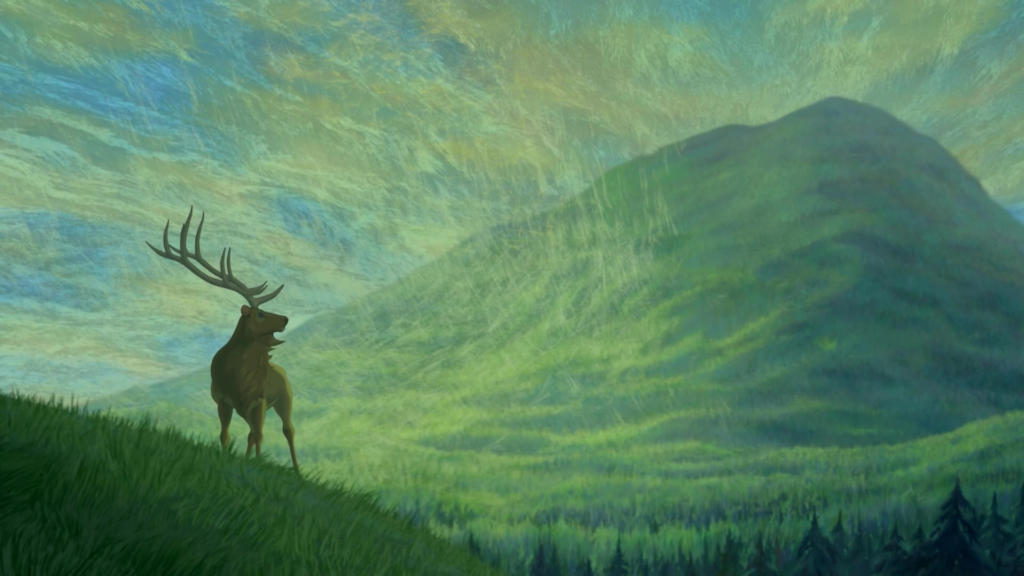
The end credits also grant my wish from the original to see the musicians (and the animators) packing up and leaving after the concert.

Conclusion
So I know I said it was almost impossible for someone to love both Fantasias equally. But I think I, myself, do! Both have their flaws and their virtues. Fantasia 1940 is arguably a little too ponderous and pretentious for its own good. Fantasia 2000 is arguably a little too fluffy and eager to please to live up to its potential. I feel like Fantasia 1940 begins slowly, starts getting really great in the middle and then ends a tad anticlimactically. Fantasia 2000, on the other hand, gets off to a sparkling start, flounders a bit in the middle and then goes out on a high note. In a weird way, they balance each other out. The most powerful bits of the first Fantasia are images of doom and destruction. (Mickey being overwhelmed by the inexorable broom army in The Sorcerer’s Apprentice. The extinction of the dinosaurs in The Rite of Spring. The thunderstorm in The Pastoral Symphony. The unholy revels on Bald Mountain.) The most powerful bits of Fantasia 2000 are images of joy and restoration. (The whales ascending into the heavens in The Pines of Rome. The unexpectedly granted wishes in Rhapsody in Blue. Donald and Daisy’s heartwarming reunion in Pomp and Circumstance. The revival of the sprite and her beloved forest in The Firebird Suite.) I can’t imagine one without the other.
What could a new Fantasia bring to the table? I don’t know. It’s hard for me to imagine modern Disney make something like these movies. But then again, it was hard to imagine Disney making anything like them in the decades they did…
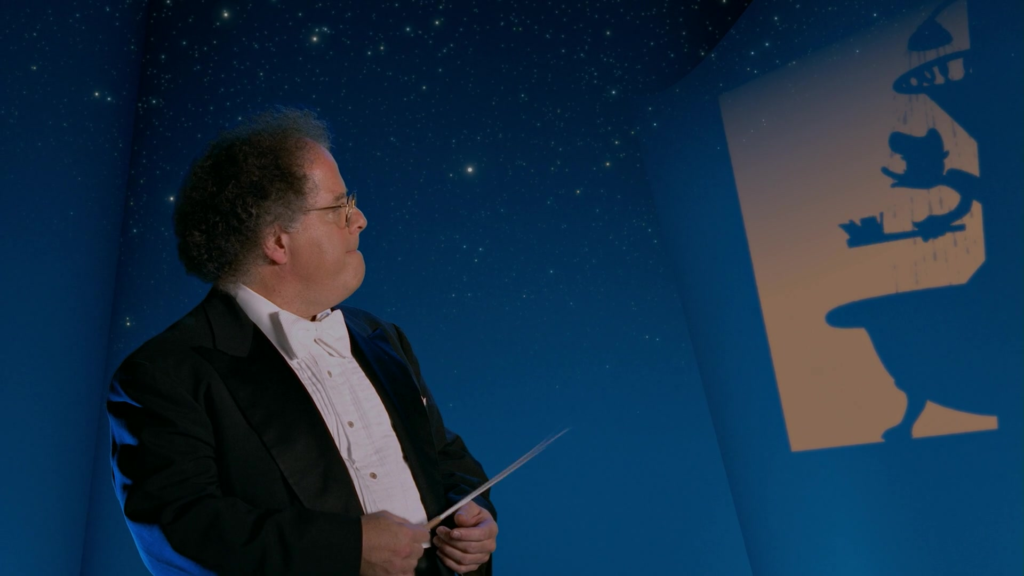
Bibliography
Culhane, John. (1999) Fantasia 2000: Visions of Hope. Disney Editions, New York.
References
| ↑1 | Though admittedly this is less true of Pines of Rome than of the others. |
|---|---|
| ↑2 | Although I’m given to understand neither is popular with purists because of the edits they make to the compositions and to the visuals’ potential influence over what viewers imagine when they next hear the music on its own. |
| ↑3 | If the idea was to make the movie more marketable, the marketing department itself doesn’t seem to have picked up on it. I don’t remember any of the celebrity hosts being mentioned in trailers or commercials. Maybe they plugged it a lot when they were on talk shows back in the day. |
| ↑4 | Who, in this version, looks kind of like the villain from Shrek. |
| ↑5 | Though there are other stories by Hans Christian Andersen of which I am a fan. |
| ↑6 | Incidentally, a short adaptation of The Little Match Girl, another Hans Christian Andersen story, was made by Disney, apparently as part of an abandoned follow up to Fantasia 2000. Unlike Piano Concerto No. 2, it stays true to the tragic nature of the original tale. It’s also a thing of beauty, so check it out if you can. |
| ↑7 | I’ve read this described as a rip-off of Princess Mononoke. While I’m familiar with (English dubs of) some of Studio Ghibli’s movies, I haven’t seen that one, so I can’t really comment, but I suspect that to the extent the accusation is true, it doesn’t invalidate Firebird Suite. |
| ↑8 | Sorry for the broad spoilers but Angela Lansbury’s introduction already kind of gives them away. |

Wow…fascinating! I scarcely remember seeing the original Fantasia, but I have the impression that I didn’t know what to do with it. Maybe I should just get ahold of this one, watch it with my boys, and check off music appreciation for the week. 🙂
If you watch it, I hope you (and your boys) like it…but I wouldn’t be surprised if you don’t. It’s more audience-friendly than the original Fantasia, but it’s still pretty out there.
I enjoy writing about movies (and books) that other people aren’t going to watch but which I myself enjoy. Thanks for commenting. Glad you found my post an interesting read.